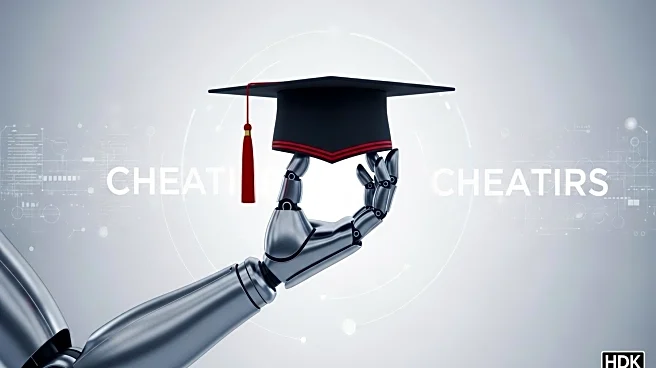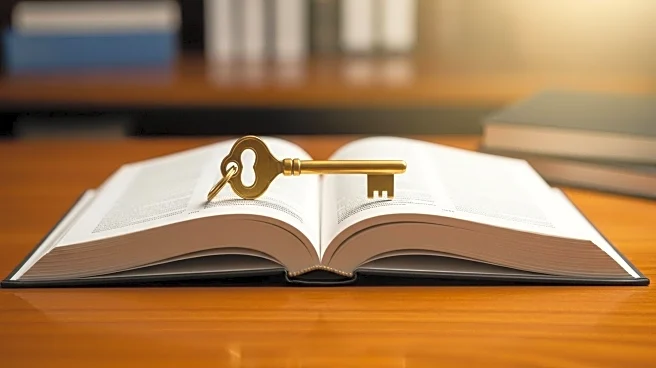What's Happening?
The University of Nottingham is exploring ways to prominently display a rare blackboard used and signed by Albert Einstein during a guest lecture in 1930. This blackboard is considered one of only three Einstein blackboards at educational institutions worldwide and the only one with his signature. Dr. Emma Chapman, outreach coordinator for physics and astronomy at the university, is leading efforts to move the blackboard to a more visible location, emphasizing its historical significance. The blackboard, which has been kept in a staff meeting room for decades, contains notes and theories written by Einstein during his lecture, which were translated into English by Prof. Henry Brose, who arranged Einstein's visit. The university also possesses other artifacts from Einstein's visit, including a signed first edition of Newton's book and newspaper clippings.
Why It's Important?
The initiative to showcase the Einstein blackboard highlights the importance of preserving and sharing historical scientific artifacts. By making the blackboard more accessible, the University of Nottingham aims to enhance public appreciation for Einstein's contributions to science and his historical visit to the university. This move could attract scholars, students, and visitors interested in the history of science, potentially boosting the university's reputation and fostering educational engagement. The preservation of such artifacts also underscores the value of maintaining historical items for future generations, ensuring that they continue to inspire and educate.
What's Next?
The university is considering various options for displaying the blackboard, such as placing it in the foyer of the physics building or a classroom. Before any relocation, the blackboard will be appraised by an expert to ensure its protection. Dr. Chapman has expressed the desire to place the blackboard in a Perspex box to preserve it for the next century. The university is committed to safeguarding the blackboard's integrity while making it accessible for educational purposes.
Beyond the Headlines
The effort to preserve and display the Einstein blackboard raises broader questions about the ethical responsibilities of educational institutions in maintaining historical artifacts. It also highlights the cultural significance of scientific heritage and the role of universities in promoting public understanding of science history. The initiative may inspire other institutions to reassess how they handle and showcase their own historical collections.













